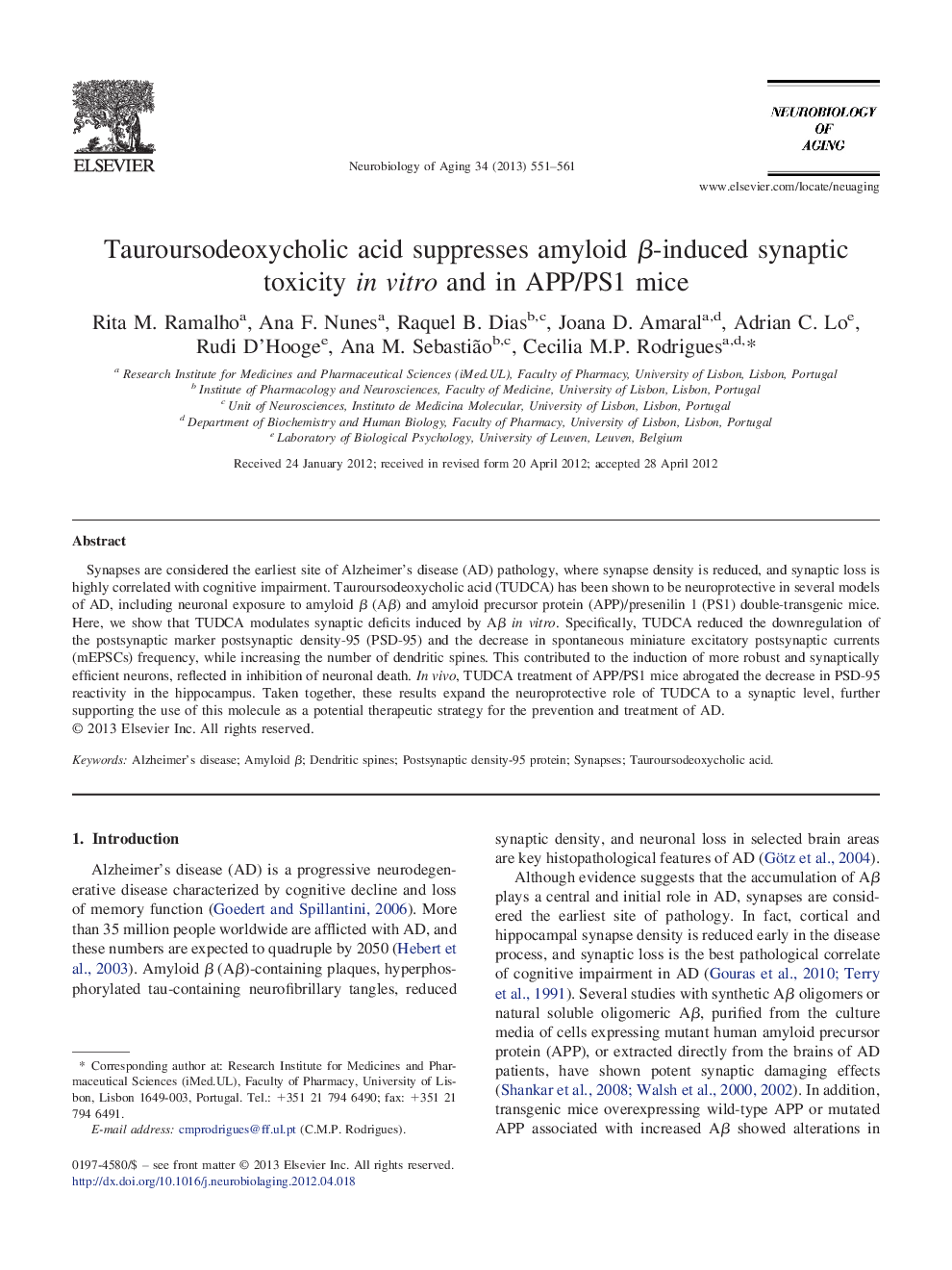| Article ID | Journal | Published Year | Pages | File Type |
|---|---|---|---|---|
| 330787 | Neurobiology of Aging | 2013 | 11 Pages |
Synapses are considered the earliest site of Alzheimer's disease (AD) pathology, where synapse density is reduced, and synaptic loss is highly correlated with cognitive impairment. Tauroursodeoxycholic acid (TUDCA) has been shown to be neuroprotective in several models of AD, including neuronal exposure to amyloid β (Aβ) and amyloid precursor protein (APP)/presenilin 1 (PS1) double-transgenic mice. Here, we show that TUDCA modulates synaptic deficits induced by Aβ in vitro. Specifically, TUDCA reduced the downregulation of the postsynaptic marker postsynaptic density-95 (PSD-95) and the decrease in spontaneous miniature excitatory postsynaptic currents (mEPSCs) frequency, while increasing the number of dendritic spines. This contributed to the induction of more robust and synaptically efficient neurons, reflected in inhibition of neuronal death. In vivo, TUDCA treatment of APP/PS1 mice abrogated the decrease in PSD-95 reactivity in the hippocampus. Taken together, these results expand the neuroprotective role of TUDCA to a synaptic level, further supporting the use of this molecule as a potential therapeutic strategy for the prevention and treatment of AD.
